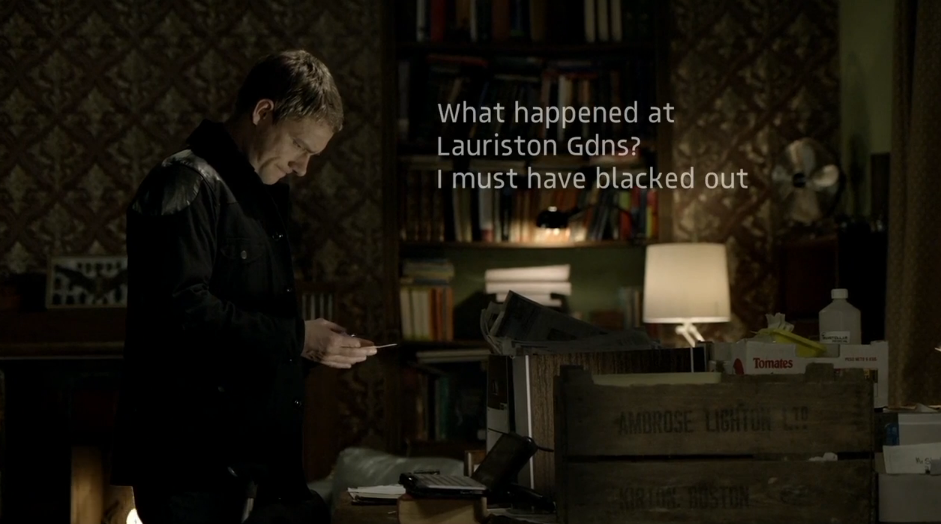Here is an
annotated version of the film poster where I have identified the conventions used (click to enlarge the image):
Mise En Scene/ Media Language:
 |
| Similar setting to 'About A Girl' |
The
location of the film looks as if it is in a
working class area as denoted by the block of flats and the worn down tin wall that the
characters are standing in front. The text "A film by Shane Meadows" seems to look like graffiti paint which highlights the
working class mise en scene as this is
iconographic image linked to the classes environment. The same technique - graffiti use - was used in the film '
About a girl' which was also based in a
working class environment.
The
characters (shown through a
long shot)
also hint very strongly of their
class: Their
costume is very simple and is of the
mass/popular culture; jeans are worn on most of the characters as these were hugely popular in the 80's which is when the film was set. The
costume is also
colour coordinated to match the poster theme of red, white and blue - the British flag colours- which suggests the British identity that the
characters hold.
 |
| The characters costume |
Finally the characters
body position allows us to identify their personalities; however on the whole the
body positions/facial expressions are quite relaxed which differs from the middle class
stereotypical straight posture, therefore cementing their class.
Representation:

As mentioned in
mise en scene the characters body
positions are created to hint at their personalities.
For example the boy in white dress holds a
body position which makes him seem stressed or worried. His face has grazes on it which could suggest that he has been in a fight, hence the stressed
posture. However his colour of
clothing usually denotes innocence which may connote how he is innocent and maybe the grazes could be the result of bullying. As he is dressed in white he is more visually noticeable than the other
characters implying that he could be a main part in the movie.

This
character also stood out to me as his
costume and
posture did not fit with the conventions created by the other characters. In the poster he is not looking at the camera with denotes distance, and also his
facial expressions seem worried. He is also wearing a suit which is not a stereotypical wear of the
working class. By looking at this I suggested that he may feel out of place with the rest of the characters. As racism was still around in the 80's (but not too a big extent) the
character may have been excluded from the group due to his ethnic minority background in the UK.
After looking at the
BBFC website I found that this is most likely true in the film and hence why the film was given an
18 age rating.
On a broader perspective, the film poster represents
working class culture through the
iconography of the buildings, costume and body posture. It also clearly denotes the
British theme due to the title include the country's name and the colours that feature in the GB flag.
Audience:
After looking at the
BBFC website I found that the age rating for this film was an
18 for the following reasons:
- Strong racist violence
- Very strong language
- Distressing scenes
- Mentioning of drugs
- Violence at vulnerable characters eg, children
Therefore the minimum
target audience for this film would be 18 and I would suggest it would reach to an age at around 28. This is because the film shows a lot of youthful events and the characters are young too. Also people who are 25+ would have been born in the 80's so they could connect with the film more as they would be able to understand/remember similar events happening to them.
I think the film would attract
classes B-D as these are the people who can afford the cinema through a
leisure income, but also a
working class themed film would still appeal to them. People of the middle class may be intrigued to watch this film as they can experience the
working class culture.
Narrative:
This can not be mentioned when only studying a film poster, as you can only discover the
narrative structure through watching the film.
Genre:
From looking at the
IMBD website, I have found out that the film is a
Crime-Drama film. I think you can tell this from the looking at the poster because:
- Skinheads are stereotypically assumed to commit more crime.
- There is a selection of different characters suggesting that drama will be caused.
- The working class is assumed more to commit crime
- Some of the characters body positions look threatening
By including these semantic codes (Rick Altman's theory), the audience can identify what the genre of the film is before watching; which will aid them when deciding whether to watch the film or not.
Conventions in Detail:
- The names of the actors in this poster are not displayed: this may be because they are not well known and therefore will not draw the audience in much. However they may feature in the billing-block but this is small and almost unreadable at a distance.
- The main text is placed above the characters in empty space (the wall and the sky). This is successful as it does not cover any important parts of the picture for example the area where the characters stand.
- Awards that the film has been given are displayed to show to the audience how successful it it.
- The title is bold and in capitals to make it the main focus, and the most important part of the film poster.




















.jpg)

























